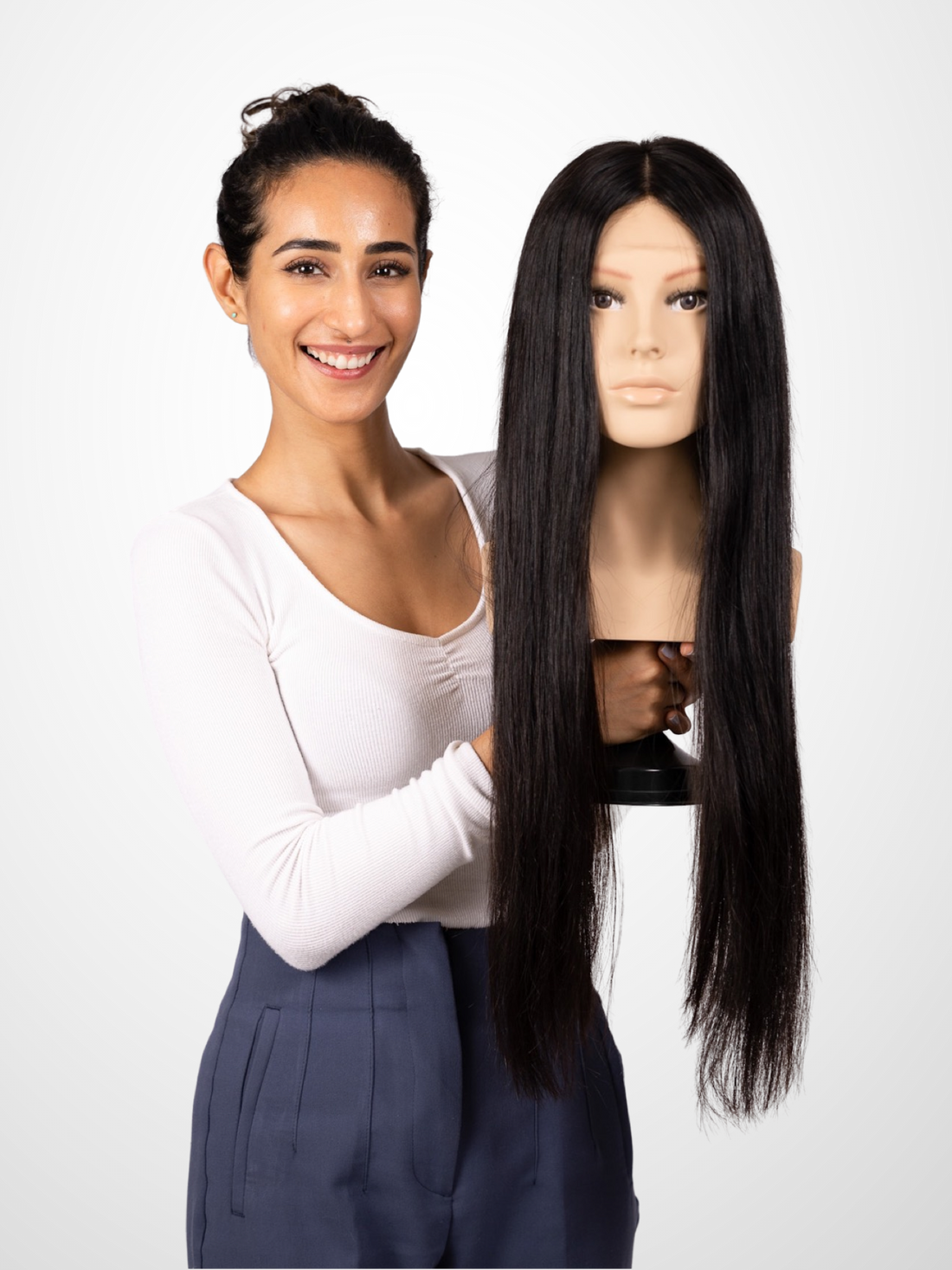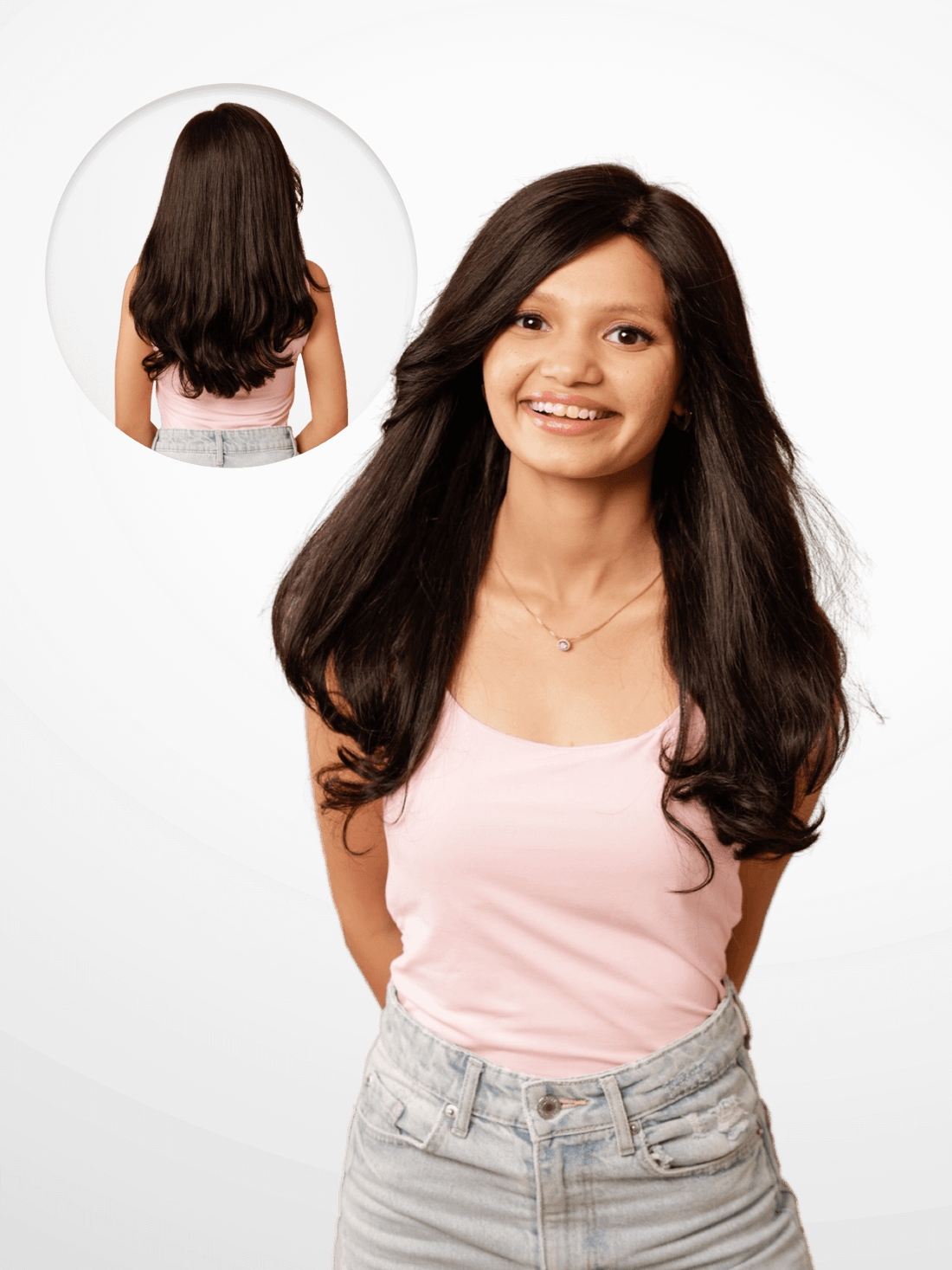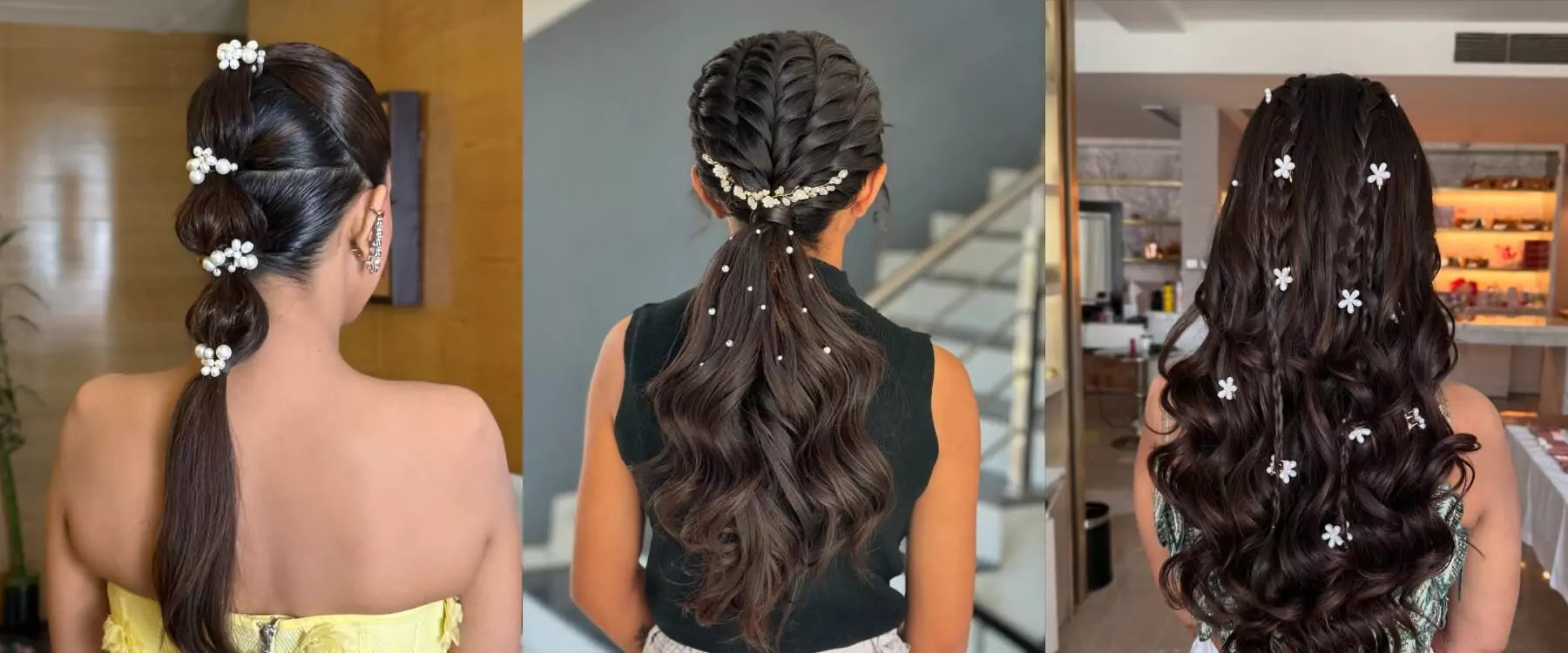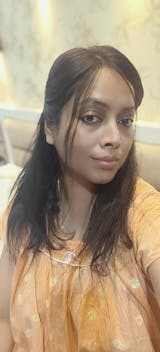Are you tired of the same old hairstyle and want to switch things up? But you are also scared of committing to a new hairstyle? Look no further than a fabulous wig! Wigs are simply amazing as they give you an effortless way to elevate your overall look but there are always two sides to a coin. While wigs are great they also have their own set of problems; from pesky tangles to uncomfortable fits and itching, it could be anything.
Today we will take on the 10 most common wig problems that people like you and I face and we'll figure out how to get past them. So get ready to slay your wig game with ease and confidence!
The 10 Most Common Wig Problems
We will now look at the 10 most common wig problems that people face and learn how to deal with them like a pro. Let’s go!
One | Itchy Scalp

Is wearing a wig causing itching and irritation? Well, one of the most common complaints among wig wearers is an itchy scalp. Itching can be an uncomfortable and irritating experience, and it can be caused by a variety of factors related to the wig's design and materials. Here are some reasons why you might be experiencing itch while wearing your wig.
- A tight wig cap can cause an itchy scalp, leading to discomfort and headaches.
- Lack of proper ventilation in the wig can make the scalp sweaty and itchy.
- Some people may may have a sensitive scalp and maybe allergic to the wig materials, resulting in an itchy scalp.
How to relieve itchy scalp under a wig?
There are some simple ways you can get relief from itching:
- Use a wig cap liner to create a barrier between your scalp and the wig cap to alleviate itching.
- Ensure that your wig cap is properly sized, neither too tight nor too loose, for optimal comfort.
- Choose a wig with good ventilation to prevent excess heat buildup on the scalp.
- Consider investing in a high-quality human hair wig for a more comfortable and natural experience.
You can find a range of premium human hair wigs at 1 Hair Stop.
Two | Sliding Wig
Imagine you're wearing your wig and going about your day and then suddenly your wig slides! A total nightmare right? Well a lot of people have faced this problem at one point or the other in their life.
There are several reasons why a wig might slide around on your head.
- Improper fitting of the wig cap can cause the wig to be too loose or too tight, leading to insecurity and sliding.
- Consider adjusting the wig cap for a comfortable and snug fit.
- The materials used in the wig cap can affect its ability to stay in place.
- Go for a wig with a non-slip cap made of silicone or velvet to enhance stability.
- The attachment method is also important, such as wig tape, glue, clips, or combs; it can impact how well the wig stays in place.
This is a trial-and-error approach, so it is important that you experiment with different methods to find the one that works for you. Choose a wig with a good grip to minimize sliding and ensure a secure fit.
How to keep your wig in place?
To keep your wig stable and in place, try the following:
1. Always use a wig grip to keep your wig secure.
2. Find a wig that is the right size and fit for you. Once you find the right wig it will be easy to attach and keep it in place.
Three | Tangling Hair

When it comes to wig maintenance, one of the most common wig problems is tangling. Your wig hair can become tangled for several reasons, and it's essential to know what causes it to prevent or minimize the issue.
The first reason for tangling is friction. When you wear your wig, it rubs against your clothes, causing the hair strands to tangle and mat over time. It's also crucial to note that synthetic wigs are more prone to tangling than human hair wigs due to their fiber structure.
Also, wind and humidity can wreak havoc on your wig hair, causing it to tangle and become unmanageable. This is particularly true if you wear your wig while performing outdoor activities or in a climate that experiences extreme weather conditions.
Another reason is improper storage. Wigs should be stored on a wig stand or mannequin head to prevent tangling and to ensure that they maintain their shape. Storing them in a box or a drawer can lead to tangling as the hair fibers rub against each other and get matted.
Say Goodbye to Wig Woes with Natural Hair Wigs
-
Emma Wig
 Emma Wig
Emma Wig- Regular price
-
MRP ₹52,000.00 - Regular price
-
MRP ₹ - Sale price
-
MRP ₹52,000.00
Miley Wig Miley Wig
Miley Wig- Regular price
-
MRP ₹52,000.00 - Regular price
-
MRP ₹ - Sale price
-
MRP ₹52,000.00
Kim Wig Kim Wig
Kim Wig- Regular price
-
MRP ₹92,000.00 - Regular price
-
MRP ₹ - Sale price
-
MRP ₹92,000.00
Kylie Wig Kylie Wig
Kylie Wig- Regular price
-
MRP ₹66,600.00 - Regular price
-
MRP ₹ - Sale price
-
MRP ₹66,600.00
Adele Wig Adele Wig
Adele Wig- Regular price
-
MRP ₹60,800.00 - Regular price
-
MRP ₹ - Sale price
-
MRP ₹60,800.00
BEST SELLERVictoria Wig Victoria Wig
Victoria Wig- Regular price
-
MRP ₹52,000.00 - Regular price
-
MRP ₹ - Sale price
-
MRP ₹52,000.00
BEST SELLERHow to avoid wig tangling?
To avoid tangling, be gentle when handling your wig, and use a wig brush or comb designed specifically for wigs. Store your wig on a wig stand or in a protective bag when not in use to prevent tangling and damage.
Four | Hair Shedding

Shedding occurs when hair strands fall out of the wig, leaving behind thinning spots. Several factors can cause wig shedding. One of the most common factors that contribute to shedding is low-quality construction. Wigs that are made from cheap materials or constructed poorly tend to shed more frequently. If you're in the market for a wig, it's important to invest in one made from high-quality materials and crafted by a reputable manufacturer.
Excessive brushing and styling can also lead to shedding. Vigorous brushing or combing can damage the hair fibers and cause them to fall out. Similarly, using heat styling tools like flat irons or curling wands can weaken the hair strands, leading to shedding over time. It's important to handle your wig gently and avoid over-styling it to minimize shedding.
How to prevent wig shedding?
Choose a high-quality wig with secure wefts to minimize shedding, and be gentle when brushing and styling your wig. Try to get a human hair wig if possible. Also, consider using a mild shampoo and wig conditioner to keep the wig hair healthy for a longer period of time.
Five | Unnatural Shine

The worst nightmare for a wig wearer would be unnatural shine. Some wigs can appear too shiny or unnatural, which can make them stand out and look less realistic. This might impact your confidence and make you more conscious about your wig in public.
How to make your wig look more natural?
To reduce shine, use a dry shampoo or wig-specific product to mattify the hair. Also do not use serums, hair wax or other such products on your wig, these products give the hair an extra shine hence making them look fake.
If you have the budget, always try to invest in a good quality human hair wig and you will not have to worry about it looking fake or cheap. Human hair wigs are made from 100% natural human hair and give the most realistic feel. Learn more about types of human hair wigs.
Six | Unnatural Hairline

If you're wearing a wig and it gives you an unnatural looking hairline it becomes really evident and detectable for everyone. And we don't want that, right? Hence it is important to get a wig that looks natural on your head.
A wig hairline will look extremely fake if it is bumpy, too straight or too far behind as compared to your natural hairline.
How to make your hairline look natural?
Choose a wig with a natural-looking hairline or consider investing in a lace-front wig, which has a more realistic hairline. Also, use makeup or a wig-specific product to create a natural-looking part and blend the wig with your own hairline. Check out our premium range of silk front full lace human hair wigs.
Seven | Heat Damage

There are mainly two types of wigs; synthetic and human hair. While both these wigs incur heat damage, synthetic wigs are more easily damaged by heat. These wigs are made with synthetic hair, which can be easily damaged by heat styling tools such as flat irons and curling irons.
How to fix a heat damaged wig?
To fix a heat damaged wig, avoid using heat styling tools frequently, and opt for wig-safe styling techniques such as wet-setting or air-drying. Also, consider investing in a human hair wig, which can be heat-styled more often if you use it with a little caution. For example, use a heat protectant spray before heat styling your wig.
Eight | Fading Colour
Have you ever felt as if your wig looks dull and its colour has maybe changed a little over time? You're not imagining it, wigs can actually loose colour and become faded over time.
Exposure to environmental factors like sunlight or things like pool water which contains high amounts of chlorine can be as damaging to your wig as it is to your natural hair. The UV rays from the sun can cause dryness which in turn makes your hair look faded.
How to fix faded wig colour?
Store your wig out of direct sunlight and away from heat sources, and consider using a wig-specific colour protectant to help prevent fading. Consider investing in a wig with a pre-dyed colour that will resist fading.
Nine | Uncomfortable Fit

A wig that does not fit you right will never look and feel right either. A wig of the wrong size is bound to cause you discomfort. If it is tight, you might experience itching and headaches. And if it is too loose, it might start moving and sliding, both of these things, we do not want.
How to make a wig comfortable?
There is only one sure-shot way to ensure that your wig is comfortable, it is to find the right size. Once you get it right, it will fit you like a dream. Also try using wig grips as they can provide added security and comfort.
Ten | Unnatural Texture
Have you ever looked at someone and said in an instant -"They're wearing a wig!". Well, if the wig does not blend well or has a texture different than your natural hair then this is a direct giveaway. While getting yourself a wig you should think about the colour, style and equally important - the texture. If you have slightly wavy hair and your wig is straight, blend it by using a curling rod. Matching texture is extremely important.
How to make wig texture more natural?
First thing, purchase a wig that has the same texture as your natural hair, if not completely then it should be a close match. This way, you'll have to put in less effort in blending it.
Conclusion
Wigs come with their own set of challenges, from tangles to shedding and everything in between! Many people experience messed up wig problems. But where there is a problem, there is also a solution. You don't have to feel helpless, with the tips that you learnt today, you can bypass any wig problem that comes your way. But is always better to invest in a good wig and provide it with good care and maintenance, as this will help you avoid wig disasters in the first place.
FAQs
1. How can I prevent my wig from tangling?
To prevent tangling, be gentle when handling your wig, use a wig brush or comb designed specifically for wigs, and store your wig on a wig stand or in a protective bag when not in use.
2. Can I use heat styling tools on synthetic wigs?
It is not recommended to use heat styling tools on synthetic wigs as they can cause damage. Instead, consider using wig-safe styling techniques such as wet-setting or air-drying.
3. How can I make my wig look more natural?
Select a wig that has a lace or silk front. as these wigs look more natural and give you a hairline that looks completely natural.
4. How can I keep my wig from sliding around on my head?
Always go for the right fit, don't buy a wig if it does not fit you well. Measure your head and pick the right size of wig. Also use a wig grip for added security.
5. How to stop hair from itching under a wig?
A crucial step to prevent itching is to wrap your hair tightly and secure it with pins, ensuring the ends are also well secured. This prevents your hair from moving under the wig, reducing the chances of it causing irritation or discomfort.
Book An Appointment
Latest Blogs
-

Top 15 Hairstyles for College Girls Quick & Stylish Ideas
The college phase is undoubtedly one of the best phases of life. No matter how many submissions you've got or how tired you are, you'll always want to create...
-

16 Easy Birthday Hairstyle Ideas For 2025
Your birthday is a milestone, and you have every reason to dress up, feel good, do all your favorite things the entire day. And for the party night—that beautiful outfit...
-

Best Hair Colours for Women: Find the Right Shade for You
In recent times, the hair colour segment has levelled up to a whole new height with a kaleidoscope of gorgeous shades to pick from. Today, you're not just limited to...
- Choosing a selection results in a full page refresh.




















